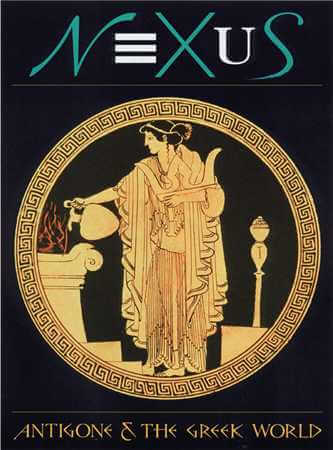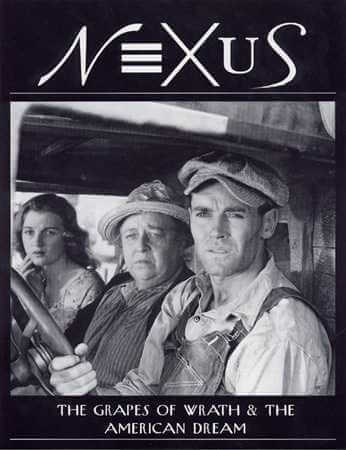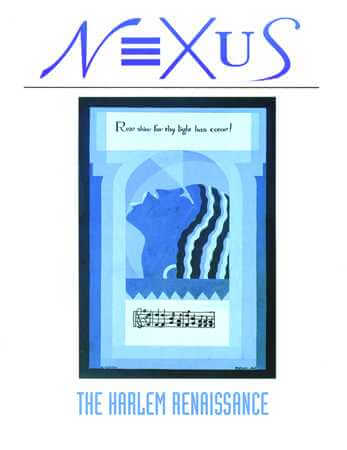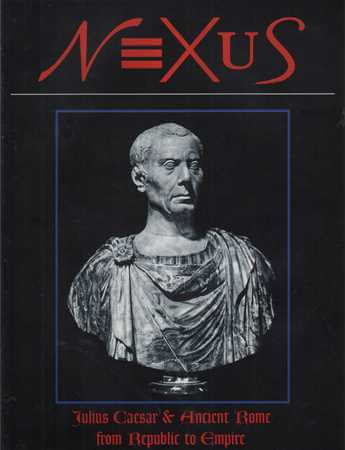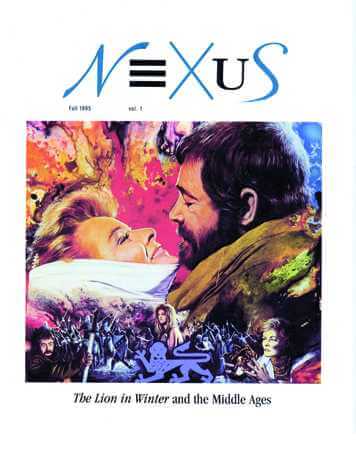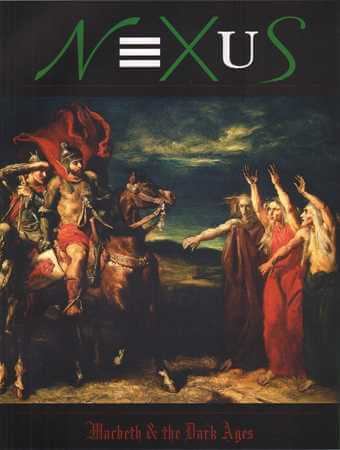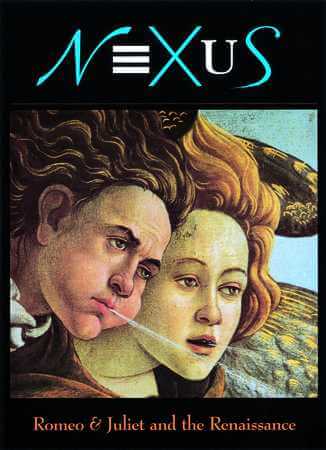NEXUS CONNECTS: Macbeth Virtual Supplements and Lessons with Worksheets:
The ONLINE Macbeth supplements, although designed to be extensions of the NEXUS book Macbeth and the Dark Ages, can also be taught independently of the book.
(NOTE: Unlike NEXUS books, all NEXUS supplements are virtual.)
TO ACCESS ANY OR ALL OF THE MACBETH SUPPLEMENTS, ORDER HERE.
TO ENSURE THE INTEGRITY OF THE ANSWERS TO LESSON QUESTIONS, THEY ARE NOT POSTED ONLINE.
TO REQUEST THE ANSWERS, EITHER EMAIL US A REQUEST, USING THE LINK BELOW, WITH YOUR DEPARTMENT HEAD’S OR PRINCIPAL’S SCHOOL EMAIL ADDRESS (Answers will not be sent to personal email addresses)
OR
SEND AN SASE (with the appropriate amount of postage) ON SCHOOL LETTERHEAD, ADDRESSED TO THE DEPARTMENT CHAIR to
NEXUS, 5017 Archmere Ave., Cleveland, OH 44144
Macbeth’s Battlefield Dress
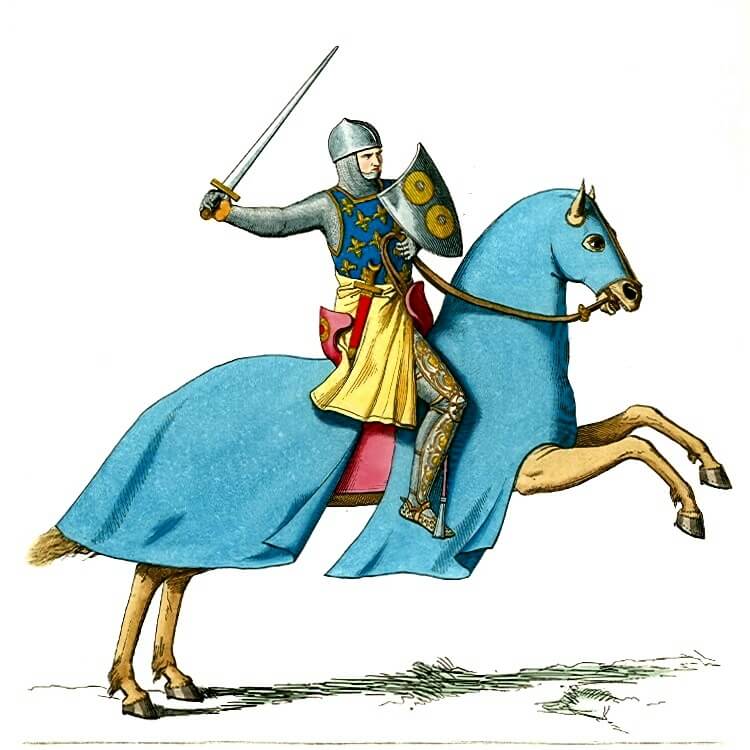
![]() Medieval Armor Lesson
Medieval Armor Lesson
This Macbeth supplement-lesson, which appeals to students’ almost innate interest in the Middle Ages, explores the evolution of medieval armor from mail (used in Macbeth’s time) to plate and draws students’ attention to details of the armor and weapons depicted in the Bayeux Tapestry. The lesson includes a worksheet with fifteen questions. Written by Stephen Fliegel, Curator of Medieval Art, Cleveland Museum of Art.
For INSTANT ACCESS to this MACBETH Supplement and Lesson
Queen of Light vs. Queen of Darkness
Lesson on Malcolm’s Influential Queen 
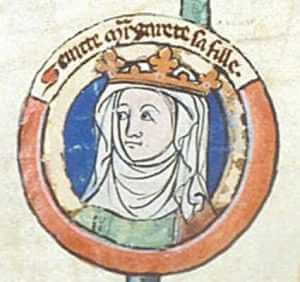
![]() Saint Margaret & Her Royal Sons
Saint Margaret & Her Royal Sons
In this Macbeth supplement and lesson (with worksheet) students compare and contrast Malcolm’s queen (St. Margaret) with Lady Macbeth and investigate the former’s critical influence on Scotland’s fate after the fall of Macbeth. [As discussed in the chapter “The King and the Saint” in Macbeth and the Dark Ages, Saint Margaret was the sister of the last living Saxon heir to the throne of England, Edgar Atheling, the great nephew of Edward the Confessor.]
For INSTANT ACCESS to this MACBETH Supplement and Lesson
COMMON CORE STANDARDS MET WITH THIS LESSON:
Delineate and evaluate the argument and specific claims in a text, including the validity of the reasoning as well as the relevance and sufficiency of the evidence.
Analyze how two or more texts address similar themes or topics in order to build knowledge or to compare the approaches the authors take.
Compare the point of view of two or more authors for how they treat the same or similar topics, including which details they include and emphasize in their respective accounts.
Feudalism vs. Nationalism Lesson
Malcolm: “My thanes and kinsmen, henceforth be earls…”

![]() Braveheart and the Bruce
Braveheart and the Bruce
Ihis exciting Macbeth supplement/lesson explores the consequences of the “English” policies that Malcolm sets in motion at the end of Macbeth and helps students better understand feudalism in Scotland and elsewhere by contrasting it with the nationalism exhibited by William Wallace (“Braveheart”) and later Robert the Bruce.
For INSTANT ACCESS to this MACBETH Supplement and Lesson
COMMON CORE STANDARDS MET WITH THIS LESSON:
Read closely to determine what the text says explicitly and to make logical inferences from it; cite specific textual evidence when writing or speaking to support conclusions drawn from the text.
Delineate and evaluate the argument and specific claims in a text, including the validity of the reasoning as well as the relevance and sufficiency of the evidence.
Analyze how two or more texts address similar themes or topics in order to build knowledge or to compare the approaches the authors take. [Refers in particular to Question 4.]
Cite specific textual evidence to support analysis of primary and secondary sources, attending to such features as the date and origin of the information. [Refers in particular to Question 4.]
Compare the point of view of two or more authors for how they treat the same or similar topics, including which details they include and emphasize in their respective accounts. [Refers in particular to Question 4.]
Assess the extent to which the reasoning and evidence in a text support the author’s claims.
Compare and contrast treatments of the same topic in several primary and secondary sources. [Refers in particular to Question 4.]
Period Architecture Lesson

![]() Romanesque Architecture
Romanesque Architecture
In this Macbeth supplement/lesson, students explore the reasons for the rise of Romanesque architecture in the 11th century and its spread from the continent to England.
For INSTANT ACCESS to this MACBETH Supplement and Lesson
Shakespeare Study Hall (Coming Soon)
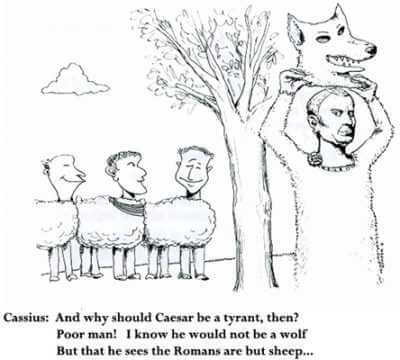
![]() Tackling the Figurative Language in Shakespeare’s Plays (SHAKESPEARE STUDY HALL – COMING SOON)
Tackling the Figurative Language in Shakespeare’s Plays (SHAKESPEARE STUDY HALL – COMING SOON)
In the online SHAKESPEARE STUDY HALL students explicate Shakespeare’s figurative language using graphic tools that help them to identify antithesis, parallelism, oxymoron, etc. The language is made clear and entertaining with cartoons that SHOW what Shakespeare SAYS.
The SSH is divided into three rooms – brain workout rooms: 1) the Romeo and Juliet Room; 2) the Macbeth Room; and 3) the Julius Caesar Room. Each year students’ facility with Shakespeare’s figurative language will greatly improve as they advance to the higher numbered rooms and tackle increasingly challenging exercises – or mental aerobics. As students acquire mastery over Shakespeare’s language, their reading and critical thinking skills will dramatically improve in literature and all other subjects.
NEXUS is a 501(c)(3) nonprofit based in Cleveland, OH. Our mission is to provide schools with outstanding interdisciplinary resources that inspire students to THINK, LINK and IMAGINE.
A portion of our proceeds is donated annually to UNICEF’S Audrey Hepburn All Children in School Fund.


